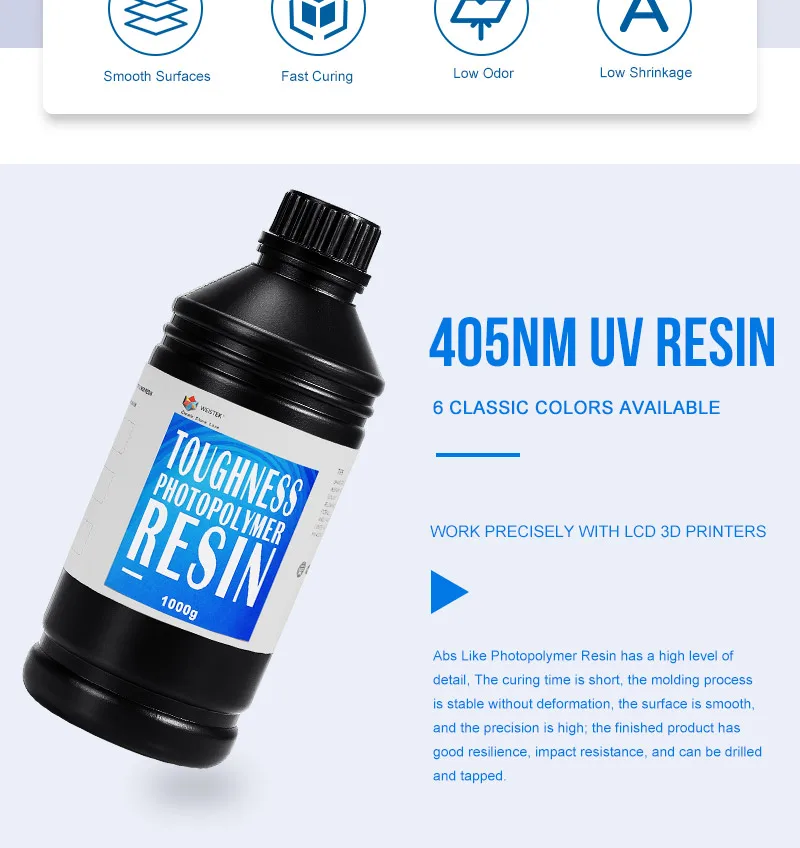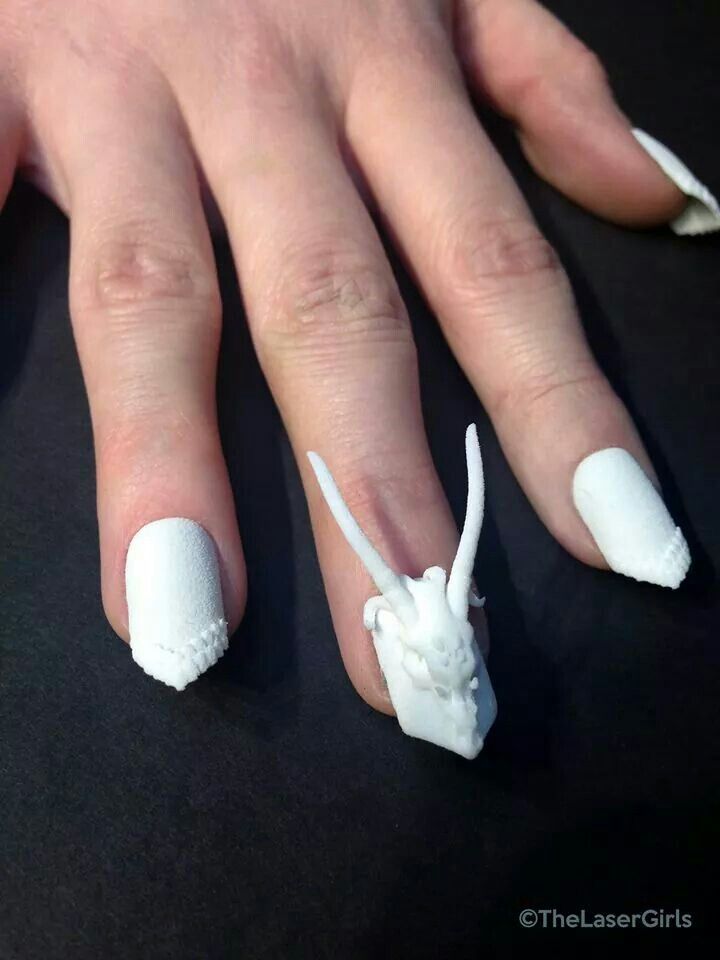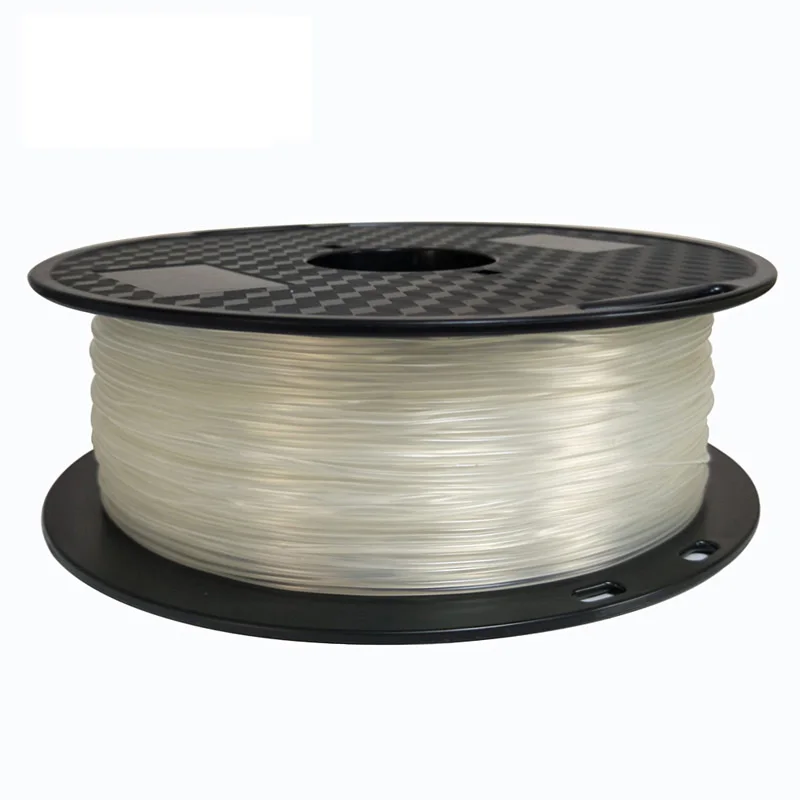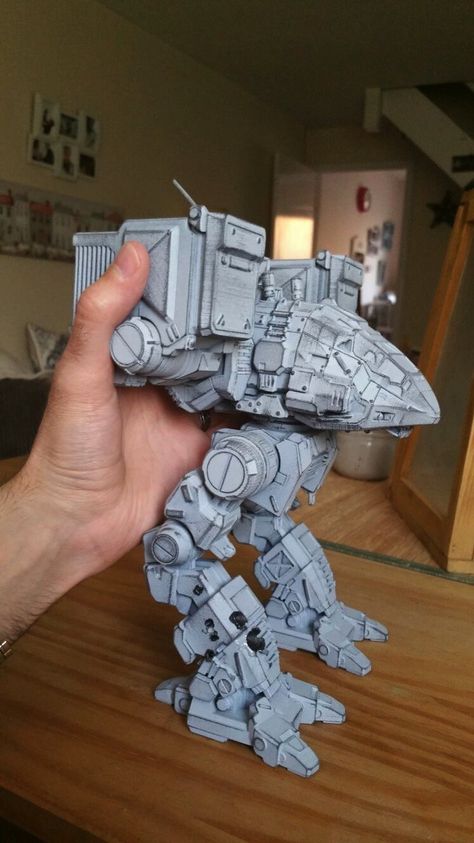3D print fiberglass
What You Need to Know
A Brief Composites Fiber Lesson
As we covered in Physics of 3D Printing, imagine the fiber is like raw spaghetti. If you try to bend it, it snaps. If you try to compress it lengthwise by trying to push the two endpoints closer together, it also snaps. However, if you load it in tension by pulling on it, it can hold a decent load. Like the spaghetti, continuous fibers are strongest when loaded in tension. The key is understanding where the fibers are loaded in tension, and how a given load can distribute amongst the local fibers.
Continuous fibers act strongest in tension, just like raw spaghetti.
Types of Fiber Fill
Eiger, the Markforged 3D printing software platform, provides a few options for reinforcing your parts with continuous strands of composite fibers. Each reinforcement strategy can be applied to a layer or group of layers in a part. The different reinforcement options allow you to strategically place fiber so that you can optimize the reinforcement method for your part's loading conditions.
Different fiber fill options will reinforce a given layer with a different reinforcement strategy.
Concentric Fill
Concentric Fill lays fiber around the perimeter of a wall. This fill type mainly helps resist bending about the Z axis and strengthens the walls against deformation. You can specify how many fiber shells you want by changing the number of concentric fiber rings. You can edit the start point of the fiber by changing the "Start Rotation Percent" setting when viewing a 2D layer slice or group in Internal View.
All walls: This type lays down fiber to reinforce both the outer shell and the inner holes, providing the reinforcement properties of both.
Outer shell only: This type only reinforces the outer walls of a part. This can be used to reinforce the part for bending or impact loads applied to the sides of the part.
Inner holes only: This type only reinforces the inside walls of a part. This can be used to strengthen bolt holes or cavities to improve load distribution when compressive or out-of axis torsional forces are applied to inner holes.
This can be used to strengthen bolt holes or cavities to improve load distribution when compressive or out-of axis torsional forces are applied to inner holes.
Isotropic fill
Isotropic fill routes fiber back and forth in a zig-zag pattern to simulate the individual unidirectional layers of a traditional laminated composite. By default, subsequent isotropic fiber layers rotate the fibers by 45 degrees to achieve unidirectional strength within a fiber group, but the fiber angle (the orientation of the zig-zag pattern of the fibers) can be changed if needed. Layers of isotropic fill fiber resist bending in the XY plane. In addition to the isotropic fill pattern, this option by default traces concentric rings around all walls to improve wall strength.
Types of Fiber
Your choice of fiber impacts the behavior of your part. It can affect strength, stiffness, failure condition, and even heat resistance. Selecting the best fiber for your application is an important factor in your part's performance. Watch our webinar on selecting a fiber fit for your application, or check out or material data sheet for more.
Watch our webinar on selecting a fiber fit for your application, or check out or material data sheet for more.
Carbon Fiber
Carbon fiber has incredible strength to weight properties. It is a very stiff material that remains close to rigid until failure, in which case it often fractures or splinters. It's best used in constant loading conditions when you want to match the strength of metal at a fraction of the weight, since it behaves like 6061 aluminum.
Carbon fiber can match the strength of 6061 aluminum - in this test, both beams are loaded with a 27.5 lb weight.
Fiberglass
Fiberglass is a robust reinforcement option that has a bit more flex and energy return to it than carbon fiber. It's best used in intermittent loading conditions, and bends until eventual fracture. Fiberglass is a great general-use fiber for when you need sturdy parts, and it is the most cost-effective reinforcement option.
Fiberglass is s good starting point fiber, already 2-3 times stronger than traditional 3D printing plastics. Each of these was tested with a 7.5 lb weight.
Kevlar
Kevlar is a very shock-resistant material ideal for impact loading or similar use cases. It is very tough, and will fail by bending until it eventually permanently deforms.
Kevlar is ideal for impact or shock loading cases. Here we test a PLA, ABS, and Kevlar reinforced puck for toughness.
High Strength High Temperature (HSHT) Fiberglass
HSHT Fiberglass is a heat-resistant fiber reinforcement material. It has a higher heat-deflection point than the other fibers, meaning it can hold its strength at high temperatures. It is similar to fiberglass in that it has high energy return and will bend until it fractures.
HSHT has a high heat deflection temperature. Each of these beams was heated to 300 degrees Fahrenheit before being tested with a 5lb load.

Reinforcing For Different Loading Conditions
Tension
Align your fibers with your tensile force.
Fibers are strongest in tension, so a part loaded in tension should consist of fibers running up and down the length of the part, being “stretched” by the force. You can align fibers with your tensile forces with concentric rings along ribs or with isotropic fiber by setting the fiber angle parallel to the force.
Bending
Place fiber planes on the extreme faces experiencing bending.
Beam Bending Theory shows that when a beam is bent, the inside face of the bend is loaded in compression, while the outside face of the bend is loaded in tension. By putting rigid materials on the extremes of a beam you reinforce it most effectively. This is why traditional composite layups consist of fiber panels on each face with a softer material on the inside, forming what is called a sandwich panel.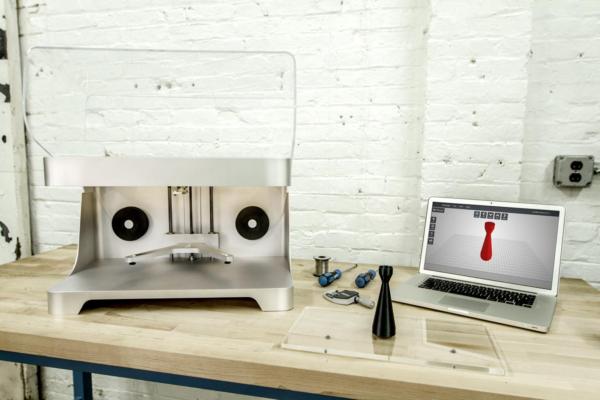 To reinforce a part in bending, build a sandwich panel with isotropic fiber panels if the neutral plane is in XY, or concentric fiber when bending around the Z axis.
To reinforce a part in bending, build a sandwich panel with isotropic fiber panels if the neutral plane is in XY, or concentric fiber when bending around the Z axis.
Compression
Build a scaffold of fiber to reinforce against compressive forces.
The key to dealing with compressive forces is in the force distribution. The fiber should serve as a scaffold beneath the load, able to distribute the load along the fiber’s path. Side loads can be reinforced from compression with concentric reinforcement. Vertical loads can be reinforced from compression using isotropic reinforcement on the upper and lower faces, and concentric reinforcement between the two Isotropic panels to further support the load. This is especially helpful for supporting clamping forces from bolts.
Fiber Anisotropy
Think critically about how your part is oriented when reinforced with fiber, because anisotropy is still at play.
Markforged 3D printers print composite parts that are effectively transverse isotropic./cdn.vox-cdn.com/uploads/chorus_asset/file/14605799/mark_one_3d_printer.1419980292.png) While isotropic materials have uniform material properties in all directions, transverse isotropic materials have one set of properties along an axis, and a different set on planes normal to that axis. This translates to 3D printed parts, in which the part strength on XY planes is stronger than the part strength along the Z axis, especially with continuous fibers. This is why it’s important to consider print orientation during the design process.
While isotropic materials have uniform material properties in all directions, transverse isotropic materials have one set of properties along an axis, and a different set on planes normal to that axis. This translates to 3D printed parts, in which the part strength on XY planes is stronger than the part strength along the Z axis, especially with continuous fibers. This is why it’s important to consider print orientation during the design process.
3D printing with fiberglass - 3D Printers - Talk Manufacturing
rbsonic1
#1
I’m looking for a way to build a 3D printer with fiberglass printing capability such as Markforged Mark One. I haven’t seen any alternatives to that one, so I was wondering if there are any extruders out there that support fiberglass printing at all? Ideally I would order a kit and then modify it in a way to add additional extruder for fiberglass, but I’m not sure what option would be the most viable. Any advice would be greatly appreciated.
Any advice would be greatly appreciated.
1 Like
ItsJustMidnight
#2
Hey,
just like you I’ve only heard of the Mark One being able to embed continuous fibre into printed parts. If you’re really looking to mod an existing design to do this, brace yourself for some experimenting. The Mark One uses essentially a dual extruder design, one for dispensing just nylon, the second one for nylon + fibre. Then there is the fibre feeding and cutting mechanism, accompanying firmware changes to control them, the custom slicer to embed the fibres… If this printer does what you need it do I’d advise against trying to put something like this together by yourself.
Sincerely,
Jonas
1 Like
StarkIndustries
#3
I own 3 Mark Forged prints, two mark 1 and a new Mark 2. I also own over 2 dozen FDM or SLA printers personally, so I feel I have a very firm grasp on various ranges of capabilities of 3D printers. The Mark Forged Mark 1 v2 (with the newer extruder ) are really in a class of their own. Looking at my Rostock v3 or makerbot z18 next to the Mark Forged printers, you could easily physically identify the quality difference in build and construction. I’ve built many 3D printers and those I didn’t build, I modified heavily, from code to hardware. The Mark 1 and 2 have an extremely intricate dual extruder as well as fiberglass auto cutting system. I literally mean that every component within the extruder AND every single surrounding component is machined and precise. It’s like comparing a Porsche to a Mustang…one is quality German engineering, the other is redneck tooled, mostly plastic, garbage. The fiberglass, Kevlar, or carbon fiber filament, is exclusive to mark forged as well…and no, proto pasta CFs not even close to the same concept. I’ve raved about how consistently reliable and precise the Mark 1 and Mark 2 can print.
I also own over 2 dozen FDM or SLA printers personally, so I feel I have a very firm grasp on various ranges of capabilities of 3D printers. The Mark Forged Mark 1 v2 (with the newer extruder ) are really in a class of their own. Looking at my Rostock v3 or makerbot z18 next to the Mark Forged printers, you could easily physically identify the quality difference in build and construction. I’ve built many 3D printers and those I didn’t build, I modified heavily, from code to hardware. The Mark 1 and 2 have an extremely intricate dual extruder as well as fiberglass auto cutting system. I literally mean that every component within the extruder AND every single surrounding component is machined and precise. It’s like comparing a Porsche to a Mustang…one is quality German engineering, the other is redneck tooled, mostly plastic, garbage. The fiberglass, Kevlar, or carbon fiber filament, is exclusive to mark forged as well…and no, proto pasta CFs not even close to the same concept. I’ve raved about how consistently reliable and precise the Mark 1 and Mark 2 can print. I’ve prototyped and printed parts that are currently in space, under the sea and used in combat, and while I may have used the other 3D printers to print the drafts, the alpha stage prototype part is always printed on one of my Mark Forged printers. Sure I sound like a Mark Forged salesman, I’m not, I just wanted to chime in and say " if I believed that a comparable printer could be built for a relatively cheaper or even similar price, I’d have done it". However the Mark forged finds itself in the same place as a Glowforged, its vastly better in hardware and software than anything else in its price range.
I’ve prototyped and printed parts that are currently in space, under the sea and used in combat, and while I may have used the other 3D printers to print the drafts, the alpha stage prototype part is always printed on one of my Mark Forged printers. Sure I sound like a Mark Forged salesman, I’m not, I just wanted to chime in and say " if I believed that a comparable printer could be built for a relatively cheaper or even similar price, I’d have done it". However the Mark forged finds itself in the same place as a Glowforged, its vastly better in hardware and software than anything else in its price range.
2 Likes
cSimplexity
#4
Well stated.
edsongebo
#5
Just keep in mind, the Markforged printer does not melt the fiber…it softens the material as it passes thru the print head, adhering to the nylon and dragging it in the desired pattern until the fiber strand is out.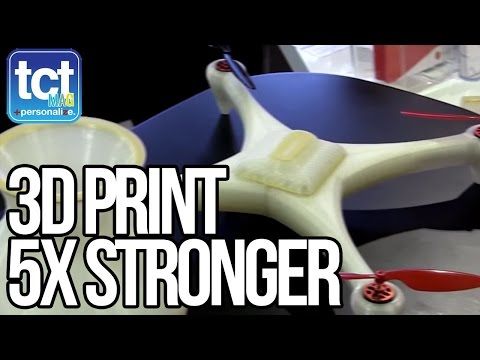 Every piece of fiber is done this way.
Every piece of fiber is done this way.
Continuous Fiberglass Printing Technology
The fully finished MAMBO (Motor Additive Manufacturing BOat) boat, made using CFM technology, was officially launched and presented at the Genoa 2020 exhibition. printer
How does it work?
Patented Continuous Fiber Manufacturing (CFM) 3D printing technology allows you to create unique shapes that cannot be achieved with conventional manufacturing. Through the use of robots skillfully controlled by generative algorithms (algorithms based on neural networks), additional freedoms for industrial design open up. nine0003
Today, the creativity of many designers and engineers is limited by various factors: technological, geometric constraints or production costs. And there are countless noteworthy projects that are destined to forever be great renders (prototype 3D renders). However, with the help of CFM technology, these projects can become a reality.
Printing process
CFM technology involves the additive application of continuous fiber impregnated with thermosetting resin to create products with optimal characteristics calculated from a computer model. This makes it possible to create fiber-reinforced products with mechanical characteristics comparable to those of unidirectional fiberglass, without the help of master models, molds or other tooling. Thus, it is possible to obtain not only prototypes, but also small batches of finished products, efficiently and at minimal cost. nine0003
This makes it possible to create fiber-reinforced products with mechanical characteristics comparable to those of unidirectional fiberglass, without the help of master models, molds or other tooling. Thus, it is possible to obtain not only prototypes, but also small batches of finished products, efficiently and at minimal cost. nine0003
Moi's patented CFM 3D printing process
This technology makes products ultra-strong and lightweight, and the robotic system allows the printing size to be scaled.
President and CEO of Moi Composites explains how and why he chose this technique.
Gabriel Natal
President & CEO Moi Composites
“I think that evolution in shipbuilding should not be limited to the creativity of designers, engineers and naval architects. Every day new boat or yacht concepts are developed, featuring futuristic shapes or new, more ergonomic hulls, but most of these great ideas remain fantasies due to production problems, mold costs or other limitations.
With 3D printing technology like ours, you can create new geometric shapes and refine them in real life.” nine0003
When the impossible becomes possible
MAMBO is 6.5 meters long and 2.5 meters wide, has a dry weight of about 800 kg and is equipped with a real navigation system, cork flooring, white leather seats and a 115 cu. engine.
The hull is a tribute to the famous Arcidiavolo yacht (architect Sonny Levy), where organic forms chase each other and become structural and functional elements.
Various parts of the boat were printed using two high-precision KUKA Quantec robots at Moi Composites headquarters (Milan) and at Autodesk’s AMF (Birmingham) to demonstrate on-site production, which is considered one of the most important advantages of 3D printing.
The MAMBO project demonstrates the great potential of additive manufacturing and 3D printing
The printed parts were joined and laminated to form a single structure without dividing the hull into decks. The relentless and continuous work of the robots, combined with the wisdom and experience of the shipyard craftsmen, has given birth to a new hybrid industrial system, technological and digital, and at the same time analog and adapted. nine0003
The relentless and continuous work of the robots, combined with the wisdom and experience of the shipyard craftsmen, has given birth to a new hybrid industrial system, technological and digital, and at the same time analog and adapted. nine0003
“The idea behind MAMBO is to demonstrate that you can produce one-of-a-kind performance-optimized boats without making models and molds. As a result, the creation of single or small batches of products eliminates the need to invest in expensive tools. Also, if you need to change something, like the shape of the hull or internal components, you can quickly and easily change your 3D model, which is difficult to do with molds.” nine0003
MAMBO on trials at sea near Otranto (Italy)
We believe that mass customization (manufacturing of individual products by analogy with motorcycles or guitars) is the next frontier and trend. Using CFM technology to create a unique, highly personalized product based on the desires of the owner is a real opportunity that we want to bring to market.
”
The company's partners in the MAMBO project are a team of global experts in automation, composite materials and the marine industry: Autodesk, Catmarine, Confindustria Nautica, Mercury Marine, MICAD, Osculati and Owens Corning. nine0003
Today, MAMBO is not only the first boat created using innovative 3D manufacturing techniques for use in real navigation, but also a window into a world of possibilities for bringing ideas and challenges that were previously impossible to life.
Large Format Raise3D RMF500 for 3D Printing with Carbon Fiber Reinforced Materials
Last fall, the well-known Chinese 3D printer manufacturer Raise3D announced a new 3D printer for small-scale production in the industrial sector - RMF500 . The unique feature of the novelty is combination of the ability to print with carbon fiber reinforced material (colloquially carbon fiber), wide format and affordability of .
We all know that high technology is becoming more accessible every day, and the RMF500 is a prime example of this. There have been systems on the 3D printing market for several years that print carbon fiber composites of similar quality, but, unfortunately, they are not available to all companies due to the very high cost and supply problems. For example, such professional 3D printers are produced by the American company Stratasys - Fortus 450mc, but they are equipped with less technological features and are much more expensive. nine0004
There have been systems on the 3D printing market for several years that print carbon fiber composites of similar quality, but, unfortunately, they are not available to all companies due to the very high cost and supply problems. For example, such professional 3D printers are produced by the American company Stratasys - Fortus 450mc, but they are equipped with less technological features and are much more expensive. nine0004
Let's take a closer look at what the RMF500 is and how it differs from other 3D printers.
The RMF500 is specifically designed for printing complex parts with high durability. It will enable 3D printers to expand their product portfolio with carbon fiber and fiberglass end parts. Both materials specially developed by Raise3D, such as PA12 CF, and materials from other manufacturers approved by Raise3D under the Open Filament Program (OFP) will work. Parts made of carbon and fiberglass are more rigid, durable, resistant to heat and shock than parts made of other plastics.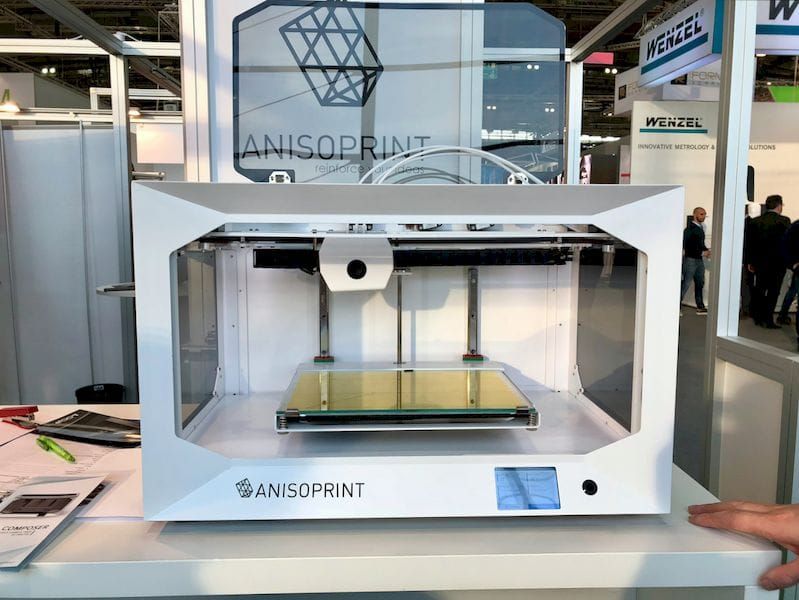 For carbon and fiberglass printing, the RMF500 uses silicon carbide nozzles with a hardness of more than 60 HRC. nine0004
For carbon and fiberglass printing, the RMF500 uses silicon carbide nozzles with a hardness of more than 60 HRC. nine0004
PA12 CF filament is the result of a long-term development by Raise3D engineers. This is a carbon fiber reinforced filament with increased stiffness and reduced shrinkage and does not require a thermostatic print chamber. The parts obtained from it are light and extremely durable, sometimes they can even be used instead of metal. In addition, the company has developed the PPA GF glass-filled filament specifically for the RMF500 and plans to launch PET-CF, ASA-GF, PPSU-GF and PP plastics for medical use. Raise3D promises that all fiber reinforced plastics will be competitively priced. nine0004
The RMF500 has a huge building area 500x500x500mm. The size of the build area matters in the production of large parts and small-scale production. For comparison, the print area of the Fortus 450mc is 406x355x406mm.
In the photo: printing a large model with carbon fiber in the RMF500 3D printer from Raise3D.
Repeatability and print speed are very important for low volume production. The maximum print speed of the RMF500, according to the manufacturer, can reach 300 mm/s. Positioning accuracy along the XY axis - 1 micron, along the Z axis - 0.09765 microns.
Synchronous feedback control with 1 µm accuracy reduces speed fluctuations as motor load changes, further improving accuracy. Stability and repeatability of printing has long been a hallmark of Raise3D printers. The FFF technology on which this 3D printer is based allows the production of parts with a high degree of repeatability, high positioning accuracy and uniform extrusion. The RMF500 can quickly print large batches of identical parts. nine0004
Pictured: production of lots from a large number of parts on the RMF500.
The printer has a printing system with two independent IDEX extruders. It allows you to print with one or two extruders at once. The RMF500 can run two jobs at the same time, further increasing productivity and task speed. The extruders are manufactured using high temperature alloys and industrial ceramic composite materials. These characteristics provide stable and high extrusion speed up to 500 g/h. nine0004
The extruders are manufactured using high temperature alloys and industrial ceramic composite materials. These characteristics provide stable and high extrusion speed up to 500 g/h. nine0004
The RMF500 has a strong design . The one-piece frame is made of hardened steel. Stainless steel linear guides have a design load of approx. 100 kg. The bearing of the linear guides has minimal backlash and does not require frequent maintenance.
An important detail - Raise3D developed a special support material for printing with reinforced plastic PA12 CF, which can be easily detached.
Pictured: Parts printed on the RMF500 with PA12 CF filament with special proprietary support. nine0110
The RMF500 is equipped with four large compartments for plastic spools. Switching between the main and auxiliary compartments occurs automatically. This feature reduces the amount of time spent threading the filament. The humidity control system keeps the relative humidity in the chamber below 5%, preventing humid air from entering from outside.
What else is there in the RMF500 from nice additional options. The front of the printer has a large 13.3-inch touch screen. Supports connection, management and printing via Wi-Fi and LAN. There is a reliable auto-calibration system from Raise3D. nine0004
Carbon fiber printed parts are strong enough to be used in the automotive and aerospace industries. Of course, they will not replace functional parts that have a special load, but their scope can be very wide. Raise3D has already presented the results of the first RMF500 printing and its application.
Pictured: Functional parts, accessory tools and fixtures, car décor printed on RMF500. nine0110
Pictured: Functional parts, accessories and aerospace prototype printed on the RMF500.
In the photo: on the left is a prototype of the hinged window mechanism (details are printed with metal filament and carbon fiber), on the right is a carbon fiber fixture. Carbon parts printed on RMF500, metal parts printed on Metalfuse.
Learn more




